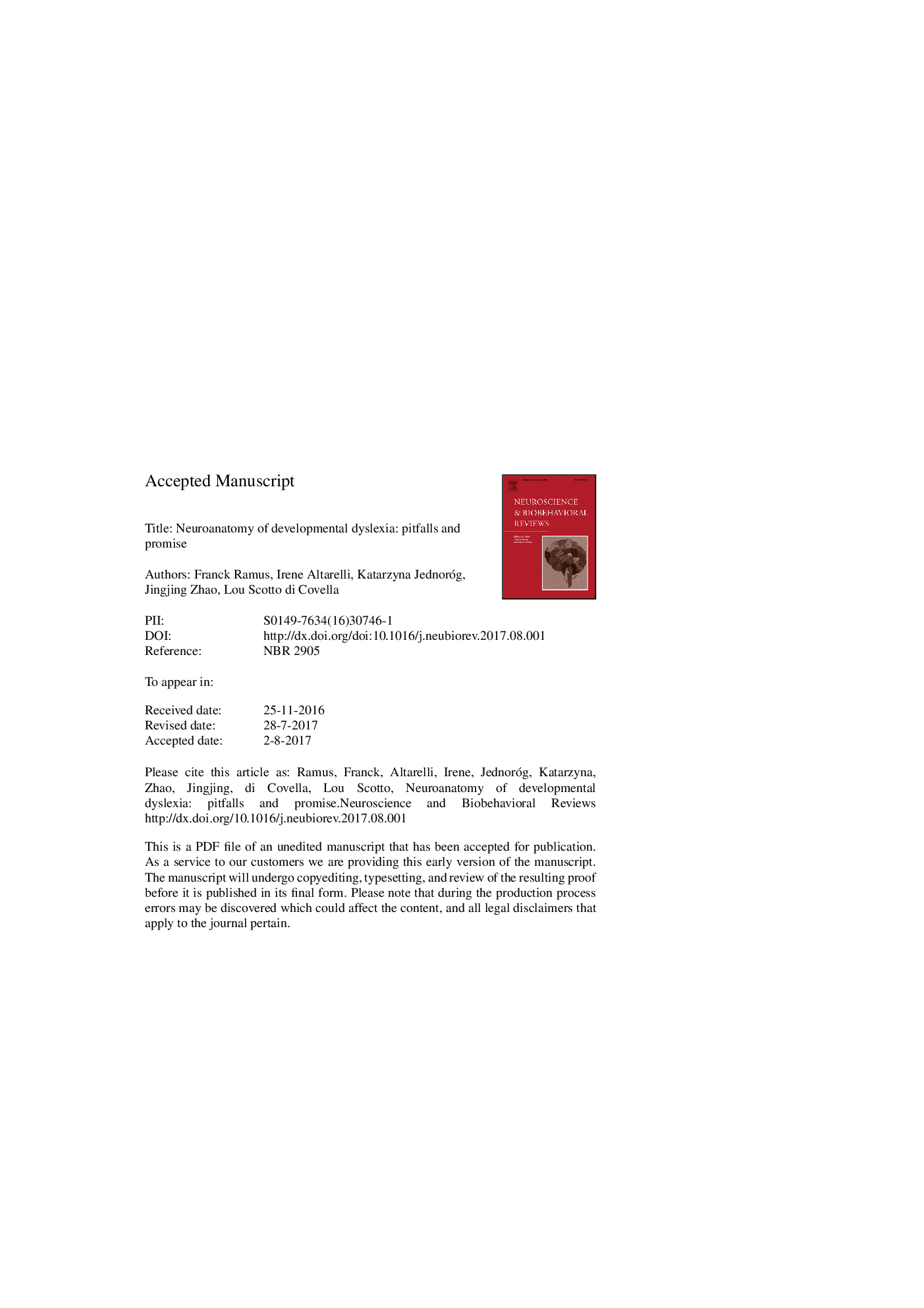| Article ID | Journal | Published Year | Pages | File Type |
|---|---|---|---|---|
| 7302394 | Neuroscience & Biobehavioral Reviews | 2018 | 70 Pages |
Abstract
Investigations into the neuroanatomical bases of developmental dyslexia have now spanned more than 40 years, starting with the post-mortem examination of a few individual brains in the 60s and 70s, and exploding in the 90s with the widespread use of MRI. The time is now ripe to reappraise the considerable amount of data gathered with MRI using different types of sequences (T1, diffusion, spectroscopy) and analysed using different methods (manual, voxel-based or surface-based morphometry, fractional anisotropy and tractography, multivariate analysesâ¦). While selective reviews of mostly small-scale studies seem to provide a coherent view of the brain disruptions that are typical of dyslexia, involving left perisylvian and occipito-temporal regions, we argue that this view may be deceptive and that meta-analyses and large-scale studies rather highlight many inconsistencies and limitations. We discuss problems inherent to small sample size as well as methodological difficulties that still undermine the discovery of reliable neuroanatomical bases of dyslexia, and we outline some recommendations to further improve this research area.
Related Topics
Life Sciences
Neuroscience
Behavioral Neuroscience
Authors
Franck Ramus, Irene Altarelli, Katarzyna Jednoróg, Jingjing Zhao, Lou Scotto di Covella,
